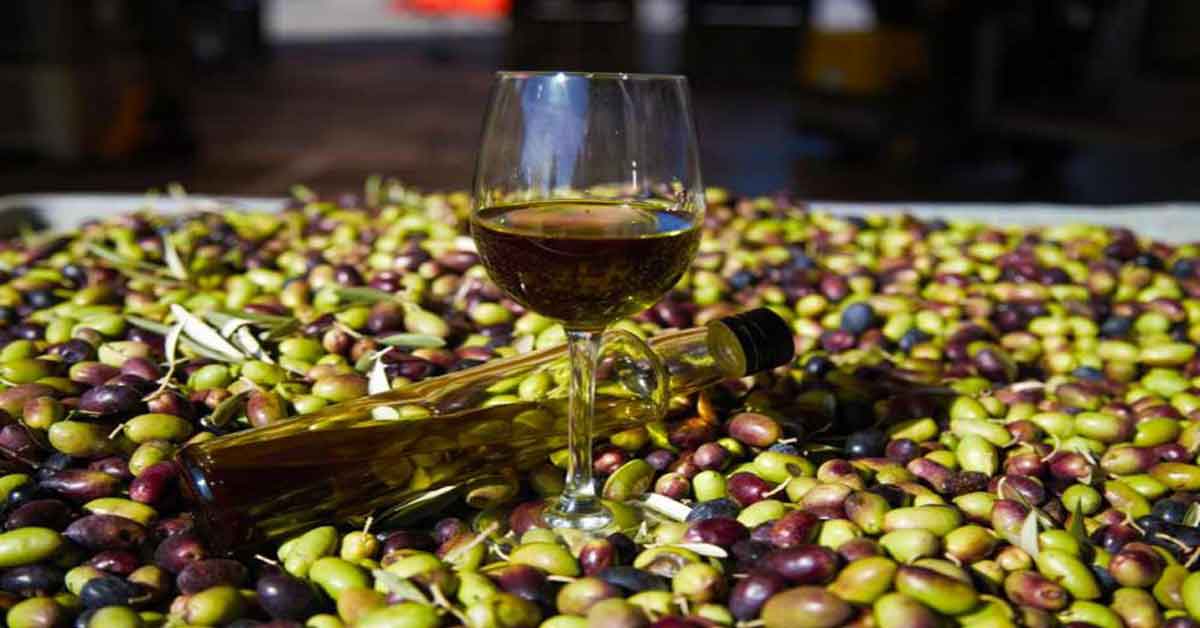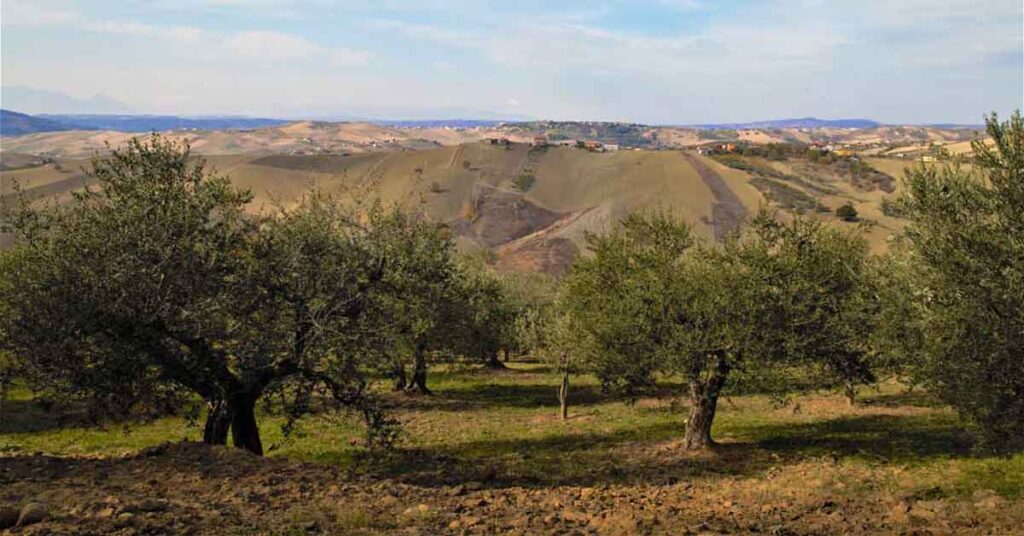How to choose the best olive oil? Buying guide

Extra virgin olive oil, we know, is one of the basic ingredients on which the Mediterranean diet is centered; thanks to its countless characteristics, it is in fact a true elixir of long life and a panacea for the body.
But how do we choose the right one? Do we really know what elements we need to take into account when buying?
In this article we will provide you with just such a set of tips so that you do not run the risk of making the wrong choice.
Olive oil: what is there to know?
The choice of vegetable oils on the market is vast, and obviously not all oils are equivalent, both in terms of organoleptic properties (which condition the final taste of the dish we eat) and in terms of their beneficial effects on the body.
So how to navigate the “jungle” of the oil market?
The first thing to do is to analyze what are the main differences between different types of olive oil:
- Extra-virgin olive oil (more commonly known by the acronym EVO): comes from the first pressing of olives, contains no more than 0.8 percent acidity and is considered to have superior taste. EVO oil is so called because it has not undergone any refining process and is, without a doubt, the healthiest, the best of the range of olive oils therefore it should be the oil that dresses your salads.
- Virgin olive oil: the name indicates that this oil has not undergone any refining however, it has a higher acidity content (1-4%) than extra virgin, so it retains only some of its natural aromas and flavors.
- Olive oil: this is the oil found in abundance on supermarket shelves. It is usually a mixed oil, composed of virgin olive oil mixed with refined olive oil, of lower quality. The quality and price depend greatly on the brand and the blend. It may be suitable for cooking but lends itself poorly to raw seasonings since it has lost most of the organoleptic properties typical of EVO.
- Pomace oil: this is an oil that has undergone many refining processes, basically representing what is left after completely pressing the olive. It is a low-quality product and very cheap. It should be used for cleaning products rather than for cooking and food consumption.
Practical tips for choosing the best olive oil

- Choose Olive Oil Packaged in Dark Bottles: In olive oil storage, the main problem is rancidity, due to oxidative degradation reactions, accelerated by the presence of light. The dark color helps to prevent oxidation of the oil, and thus ensure that the process of deterioration and rancidity is slowed down. The tin can can also be a viable packaging system, especially since the quality of the tin has improved over the years: it is, in fact, made from a single metal and without welding. The important thing is also to buy oil in containers sized to their actual use, for example, it is useless to take a “family pack” if you are single and eat out often, certainly there is an advantage in terms of savings however in the end you use rancid oil
- Avoid Low-Cost Supermarket Oil: You must not be fooled by low-cost offers, always read the label, taste the oil raw, appreciating its aroma and flavor, and by making a comparison between a low-cost bottle and a good quality bottle, you will immediately notice the difference in the typical flavor and smell of extra virgin olive oil compared to any mixed oil. If you are in doubt and if the quality of the oil you usually buy at the supermarket does not satisfy you, try going directly to the producers, visit olive farms and ask to taste the products.
- Reading Labels: In the food industry, knowing how to read labels is a guarantee for buying a quality product. Be wary of labels that are opaque, have tiny print, and are unclear about the origin of products. Labels should indicate well the brand name, production process, place of production and product characteristics. Food labeling must meet 3 basic characteristics: be clear, legible, and indelible. With regard to extra virgin olive oil, for example, they must state the product name, sales name, nominal volume and expiration date by which to consume it.
- Choosing organic olive oil: BIO certification is always a guarantee, not so much about the quality of the product, but that it is healthy. Buying an extra virgin organic oil means knowing that it is the result of more natural farming, where no chemicals have been used. Organic oil will be of higher quality and will not contain traces of pesticides and potentially harmful substances. In addition, large oil producers may use chemical correctors to hide the acidity of the oil. So choose extra virgin oil preferably from small and organic farms.
- Choosing PDO and PGI Olive Oil: If you really want to play it safe then choose PDO or PGI extra virgin olive oil, which protects and safeguards against counterfeiting throughout Europe. All products with a PDO or PGI label must comply with a very specific specification. The acronym PDO stands for Protected Designation of Origin and guarantees an oil’s origin and characteristics. In order for an evo oil to have the PDO mark, it must meet certain criteria, peculiar to each PDO and to each geographical area, relating also to the provenance and variety of olives used. Certified oil undergoes organoleptic checks on the product and the entire supply chain. Buying a PDO extra virgin olive oil means knowing where the olives come from, with the assurance of having a 100% Italian oil. The specifications contain standards for growing, harvesting and packaging the oil and must be strictly adhered to.
- Cold pressed olive oil: Cold pressing allows the nutritional and physical characteristics of extra virgin olive oil to remain intact, preserving its properties and enhancing its benefits once consumed. First cold pressing refers to the temperature of the paste of the crushed olives, which must not exceed 27 degrees during the gramolatura (stirring) stage. Crushing can take place according to different techniques: the first (the traditional one) involves the rotation of large stone (granite) wheels on the olives, which will be pressed later; the second, on the other hand, involves the use of mechanical crushers and decanters through a method that could be called “continuous” because it has no pauses. In the last case, it is more correct to speak of “cold extraction,” and it is the most widely used method because it allows for improved hygienic standards of the products and to optimally meet the needs of consumers and the market. First cold pressing allows the extraction of the content present in the fruits while preserving the amount of minerals, vitamins and substances rich in antioxidant properties for the body. The main steps are: washing, grinding or gramoling, pressing, centrifugation and filtration, always using mechanical methods.
All bottles of extra virgin olive oil bear on the label the words “Superior category olive oil obtained directly from olives and solely by mechanical processes”.
So what is it that makes first cold pressing or cold extraction such an important method?
This is a choice that can preserve the essence of a fruit and allows the production of a quality food through production stages that aim to enhance the virtues of extra virgin olive oil.
Want to know more about how to read the olive oil label?
Read also >>> Extra virgin olive oil: how to read the label

Alfio Lo Conte
Tecnico ed esperto degli oli extravergini di oliva, iscritto nell’Elenco Nazionale sezione Campania.
Maestro di frantoio con diploma, conseguito presso International Extravirgin Agency.
Read more articles by: Alfio Lo Conte
Recent Comments